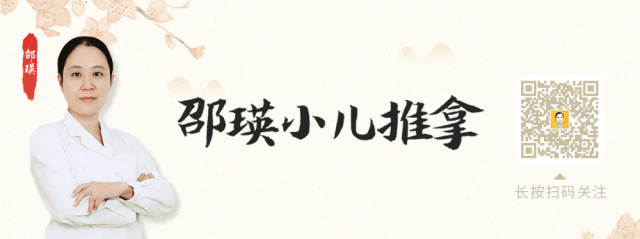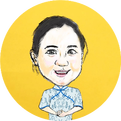
This year’s Sanfu Days are about to officially begin. We all know that Sanfu Days are an excellent opportunity for warming and tonifying Yang Qi, improving deficiency and cold conditions, and treating winter diseases in summer. Children with issues such as allergies, rhinitis, asthma, recurrent respiratory infections, and spleen-stomach deficiency and cold should seize this time for conditioning.
When it comes to warming and tonifying Yang Qi, there are many methods, and moxibustion during Sanfu Days is one of the most commonly used, yet it is also the method that parents have the most doubts about. Today, I will provide a unified answer to common questions regarding moxibustion for children.
What are the benefits of moxibustion?
Moxibustion refers to the external treatment method that stimulates acupuncture points or specific areas of the body by igniting moxa sticks or cones made from mugwort leaves, producing heat that, through the conduction of meridians, helps prevent and treat diseases and promote health.
According to the Ben Cao Cong Xin, “Mugwort leaves are bitter and pungent, warm in nature, purely Yang, capable of reviving the declining Yang, unblocking the twelve meridians, moving the three Yin, regulating Qi and blood, expelling cold and dampness, warming the uterus… Using it for moxibustion can penetrate the meridians and eliminate numerous diseases.” This shows that moxibustion can play a preventive and therapeutic role in many diseases.
Specifically, moxibustion has three main effects:
First is ‘warming’, which means dispersing cold. Mugwort leaves are warm in nature and have the effect of warming the Yang and dispersing cold and dampness. When used in moxibustion, the heat can penetrate deeply into the skin, making warming Yang and dispersing cold the most fundamental characteristic of moxibustion.
Second is ‘tonifying’, which means benefiting Yang Qi. Yang Qi is the foundation of human health; when Yang Qi is abundant, vitality flourishes, while insufficient Yang Qi leads to weakness and numerous diseases. Moxibustion can warm and support Yang, benefit Qi and blood, producing a ‘warming and tonifying’ effect.
Third is ‘unblocking’, which means smoothing the meridians and Qi and blood. Qi and blood can be considered the source of our body’s energy, but due to external pathogens or internal injuries, Qi and blood can easily stagnate, leading to various blockages and swelling. Moxibustion can unblock the meridians and regulate Qi and blood, thus having a ‘warming and unblocking’ effect.
Which children are suitable for moxibustion?
When performing moxibustion on children, we mainly utilize its warming and tonifying effects, which can both disperse cold and raise Yang.
Therefore, children with deficiency syndromes (Qi deficiency, Yang deficiency) and cold syndromes (external wind-cold, internal cold) are most suitable for moxibustion. Moxibustion can be considered the best method for unblocking the meridians in children with deficiency and cold.
1. Children with deficiency syndromes
The most common illnesses in children are respiratory and digestive system diseases, often manifesting as lung Qi deficiency and spleen Qi deficiency, which can lead to kidney Yang deficiency if prolonged.
Symptoms include easy fatigue, lack of energy after playing for a while, spontaneous sweating; poor appetite, prone to food stagnation; frequent colds, rhinitis, bronchitis, pneumonia, continuous clear nasal discharge, and frequent coughing, all of which are manifestations of Qi deficiency. Some children may also exhibit symptoms such as inability to close their eyes while sleeping or rectal prolapse.
2. Children with cold syndromes
✓ Moxibustion is most suitable in the early stages of external wind-cold. When a child has nasal congestion and clear nasal discharge, performing moxibustion on points such as Dazhui (大椎), Feishu (肺俞), and Fengmen (风门) can dispel wind and cold, helping to quickly alleviate cold symptoms. However, once a child has been sick for several days, caution should be exercised with moxibustion to avoid exacerbating internal heat.
✓ Moxibustion can be used to expel cold in children with internal cold syndromes. These children often suffer from excessive consumption of cold foods, damaging the spleen and stomach, leading to internal cold and dampness, resulting in spleen Yang deficiency. Symptoms include fear of cold, frequent abdominal pain, loose stools or diarrhea, poor appetite, cold hands and feet, etc. Such children should regularly undergo moxibustion.
Which children are not suitable for moxibustion?
Children with internal heat are not suitable for moxibustion. There are mainly two types:
One type is Yin deficiency. Children with Yin deficiency have insufficient Yin fluids, which can easily lead to internal heat and a condition of excess Yin deficiency fire, making moxibustion unsuitable. Common manifestations of Yin deficiency in children include: dry mouth and throat, easy thirst, dry and itchy throat, red eye bags, red lips, irritable temperament, hyperactivity, restless sleep, night sweats, red tongue with little coating, and thin long tongue body.
The other type is accumulated heat. Children with insufficient spleen function can easily accumulate food if they are not careful with their diet, leading to prolonged heat accumulation. Moxibustion in such cases would be like “adding fuel to the fire,” thus also unsuitable.
Can moxibustion be performed when a child has a cold, fever, or sore throat?
Many people think that if a child has a fever, performing moxibustion will only increase the heat and worsen the condition. Not necessarily; it depends on the specific situation.
As mentioned earlier, moxibustion not only has warming and tonifying effects but also an important function of ‘unblocking’. Performing moxibustion on corresponding acupuncture points can help the meridians achieve a unblocking effect, so for some heat syndromes, we can still use moxibustion.
For example, in cases of external heat with symptoms like sore throat, the “swelling” is actually a gathering of external pathogens in the throat area. Whether it is cold or heat pathogens, the gathering is caused by phlegm and blood stasis, meaning that the area is blocked, and blockage leads to pain. Moxibustion on the corresponding points can unblock the meridians and enhance local Qi and blood circulation, thereby dispersing the phlegm and blood stasis, achieving a therapeutic effect.
Moreover, moxibustion itself has a tonifying effect, which can invigorate the body’s righteous Qi. Once the righteous Qi is invigorated, it can more effectively dispel external pathogens. When the evil Qi is resolved, the internal struggle between righteous and evil Qi ceases, leading to relief from symptoms such as fever, cough, and sore throat caused by external pathogens.
Of course, for very obvious heat syndromes, such as high fever or significant internal heat, parents should avoid performing moxibustion on their children. Learning to use moxibustion promptly during the early stages of a child’s external wind-cold is already a significant achievement.
What moxibustion techniques are suitable for children?
There are several moxibustion techniques, and for children with delicate skin, the most suitable is gentle moxibustion.
Technique: Ignite the moxa stick, hold the burning end close to the acupuncture point, about 3-5 cm away from the skin, and keep it steady for 5-10 minutes until the skin turns slightly red.
To prevent burns, parents should monitor the child’s skin temperature closely, frequently asking if it feels hot. They can also use their other hand’s index and middle fingers to form a V-shape and place it above the child’s skin to sense the temperature. If it feels too hot, slightly move the moxa stick away or rotate it locally before re-fixing it.
How long should each moxibustion session last?
It is recommended to select 3-5 acupuncture points for each session, with each point being treated for 5-10 minutes. For younger children, the moxibustion time should be appropriately shortened. For example, a 3-year-old child can have each point treated for 2-3 minutes, or until the local skin is slightly red. Too few points or too short a time will not achieve the warming effect, while too many points or too long a duration may overwhelm the child, leading to fatigue.
What is the best time for moxibustion?
Moxibustion is best performed during the day, especially in the morning. This is because moxibustion has strong warming properties and belongs to Yang, which can assist in the rise and circulation of Yang Qi in the body, making it more effective during the day when Yang Qi is abundant. Additionally, performing moxibustion at night may stimulate the child’s Yang Qi, leading to restless sleep.
Will frequent moxibustion cause internal heat?
Moderate moxibustion can warm and tonify, but excessive moxibustion can deplete body fluids, leading to internal heat. Therefore, it is not necessary to perform moxibustion every day; children can undergo moxibustion every 2-3 days. Each session should be timed appropriately, avoiding excessive sweating. Remember to have the child drink some warm water before and after moxibustion.
What should be noted after moxibustion?
① Do not eat raw or cold foods on the same day. Moxibustion is a “hot” treatment method, and immediately consuming raw or cold foods, such as ice cream or cold drinks, would be like “putting out the fire,” significantly reducing its effectiveness;
② Do not take a shower immediately after moxibustion; wait 2-3 hours before bathing;
③ Maintain a light diet and avoid excessive nourishment. Parents should not immediately over-supplement their child after moxibustion, as this can easily lead to food stagnation and internal heat, causing illness.
What to do if a child refuses moxibustion?
In that case, do not force it. Besides moxibustion, there are many other methods to warm and tonify Yang Qi, such as sunbathing, foot baths, and pediatric tui na (massage), which can also be effective, so there is no need to limit to just this method.
Which type of moxa is better for children: new or old?
For children, it is best to choose old moxa, commonly referred to as Chen Ai (陈艾).
As the saying goes, “Three-year-old moxa in the house, and the doctor need not come,” referring to the benefits of three-year-old aged moxa. Aged moxa has a gentle and even heat, strong penetration, and good therapeutic effects. Additionally, aged moxa has a mild fragrance, with light and non-irritating smoke, making it more suitable for children.
– Advertisement –



